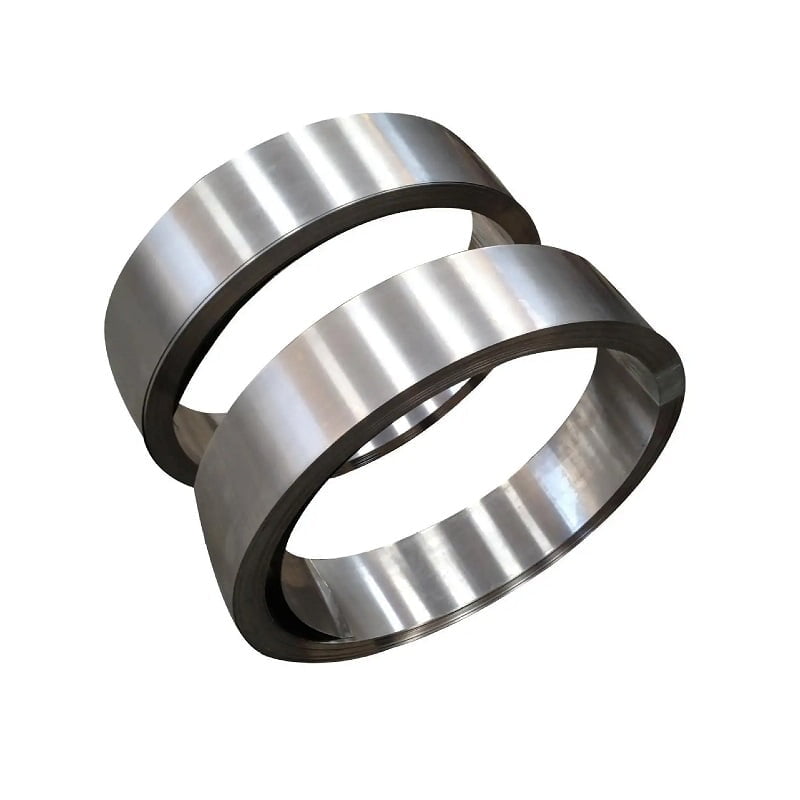
Nimonic và Inconel được các siêu hợp chất dựa trên niken đánh giá cao thường được sử dụng trong các ngành công nghiệp khác nhau cho các đặc điểm hiệu suất đặc biệt của họ. Các khía cạnh chính của các hợp kim này bao gồm:
- Thành phần: Cả hai hợp kim chủ yếu bao gồm niken, nhưng chúng khác nhau về lượng crom, molypden và các yếu tố khác, ảnh hưởng đến hiệu suất của chúng.
- Tính chất cơ học: Chúng thể hiện cường độ cao và độ dẻo tốt, nhưng các tính chất cụ thể của chúng khác nhau, ảnh hưởng đến sự phù hợp của chúng cho các ứng dụng khác nhau.
- Đang ăn mòn và kháng oxy hóa: Cả hai hợp kim đều vượt trội trong việc chống ăn mòn và oxy hóa, nhưng không được chú ý đặc biệt cho tính linh hoạt của nó trong môi trường tích cực.
- Các ứng dụng: Nimonic thường được sử dụng trong các ứng dụng hàng không vũ trụ, trong khi Inconel tìm thấy sử dụng rộng rãi trong chế biến hóa học và môi trường biển.
- Chế tạo và khả năng làm việc: Khả năng làm việc của các hợp kim này khác nhau, với việc không thể xử lý thường dễ dàng hơn.
Thành phần
| Hợp kim | Niken (Ni) | Crom (Cr) | Sắt (Fe) | Molypden (Mo) | Coban (Co) | Titan (Ti) | Nhôm (Al) |
|---|---|---|---|---|---|---|---|
| Nimonic | 63-70% | 15-20% | BAL. | 1-3% | 8-11% | 3-4% | 0.2-0,5% |
| INCONEL | 58-72% | 14-22% | BAL. | 2-10% | 3-8% | <1% | 0.2-1% |
Tính chất cơ học
| Tài sản | NIMONIC 80A | Inconel 625 |
|---|---|---|
| Tỉ trọng | 8,4 g/cm³ | 8,44 g/cm³ |
| Độ bền kéo (nhiệt độ phòng) | ~ 1000 MPa | ~ 827 MPa |
| Sức mạnh năng suất (nhiệt độ phòng) | ~ 800 MPa | ~ 690 MPa |
| Phạm vi nhiệt độ hoạt động | Lên đến 1000 ° C | Lên đến 1000 ° C |
| Kéo dài (khi gãy xương) | 30% | 48% |
Đang ăn mòn và kháng oxy hóa
| Hợp kim | Sự miêu tả |
|---|---|
| Nimonic | Điện trở oxy hóa vượt trội ở nhiệt độ cao, lý tưởng cho các thành phần tuabin trong hàng không vũ trụ. |
| INCONEL | Kháng ăn mòn tuyệt vời trong một loạt các môi trường phản ứng, làm cho nó phù hợp cho các ngành công nghiệp chế biến hóa học tích cực. |
Các ứng dụng
| Ngành công nghiệp | Ứng dụng Nimonic | Ứng dụng Inconel |
|---|---|---|
| Không gian vũ trụ | Lưỡi tuabin, buồng đốt | Hệ thống ống xả, các thành phần cấu trúc |
| Sản xuất điện | Tuabin khí, bộ trao đổi nhiệt | Ống máy phát hơi, các thành phần của lò phản ứng hạt nhân |
| Dầu khí | Ống dẫn xuống, các thành phần nhà máy lọc dầu | Máy móc sản xuất dầu khí, đường ống |
| Xử lý hóa chất | Lò phản ứng, trao đổi nhiệt | Thiết bị xử lý hóa học, van và phụ kiện |
| Ứng dụng hàng hải | Không được sử dụng phổ biến | Giàn khoan dầu ngoài khơi, ứng dụng hàng hải |
Chế tạo và khả năng làm việc
| Hợp kim | Kỹ thuật chế tạo | Khả năng làm việc |
|---|---|---|
| Nimonic | Hàn, gia công, đúc | Trung bình - có thể là thách thức đối với máy do sức mạnh cao. |
| INCONEL | Hàn, gia công, định dạng | Tốt - cung cấp các đặc điểm hàn tuyệt vời và có thể dễ dàng hình thành. |
Thuận lợi
| Hợp kim | Thuận lợi |
|---|---|
| Nimonic | -Sức mạnh nhiệt độ cao tuyệt vời |
| - Kháng oxy hóa vượt trội | |
| -Được thiết kế cho các ứng dụng căng thẳng cao | |
| INCONEL | - Khả năng chống ăn mòn tuyệt vời trong môi trường phản ứng |
| - Tính chất cơ học tốt trên phạm vi nhiệt độ rộng | |
| - Ứng dụng đa năng trong các ngành công nghiệp khác nhau |
Sự khác biệt
| Tính năng | Nimonic | INCONEL |
|---|---|---|
| Trọng tâm chính | Các ứng dụng nhiệt độ cao, đặc biệt là trong các tuabin hàng không vũ trụ và khí. | Kháng ăn mòn trong các ngành công nghiệp khác nhau. |
| Sự thay đổi thành phần | Cobalt và titan cao hơn cho sức mạnh nhiệt độ cao được cải thiện. | Một phạm vi rộng hơn của các lớp được thiết kế cho các ứng dụng khác nhau. |
| Khả năng làm việc | Khó hơn để máy do sức mạnh cao hơn. | Nói chung dễ dàng hơn để chế tạo và hàn. |
Phân tích so sánh này cung cấp một cái nhìn tổng quan rõ ràng về sự khác biệt và tương đồng giữa Nimonic và Inconel, giúp xác định hợp kim nào có thể phù hợp hơn cho các ứng dụng kỹ thuật cụ thể.
